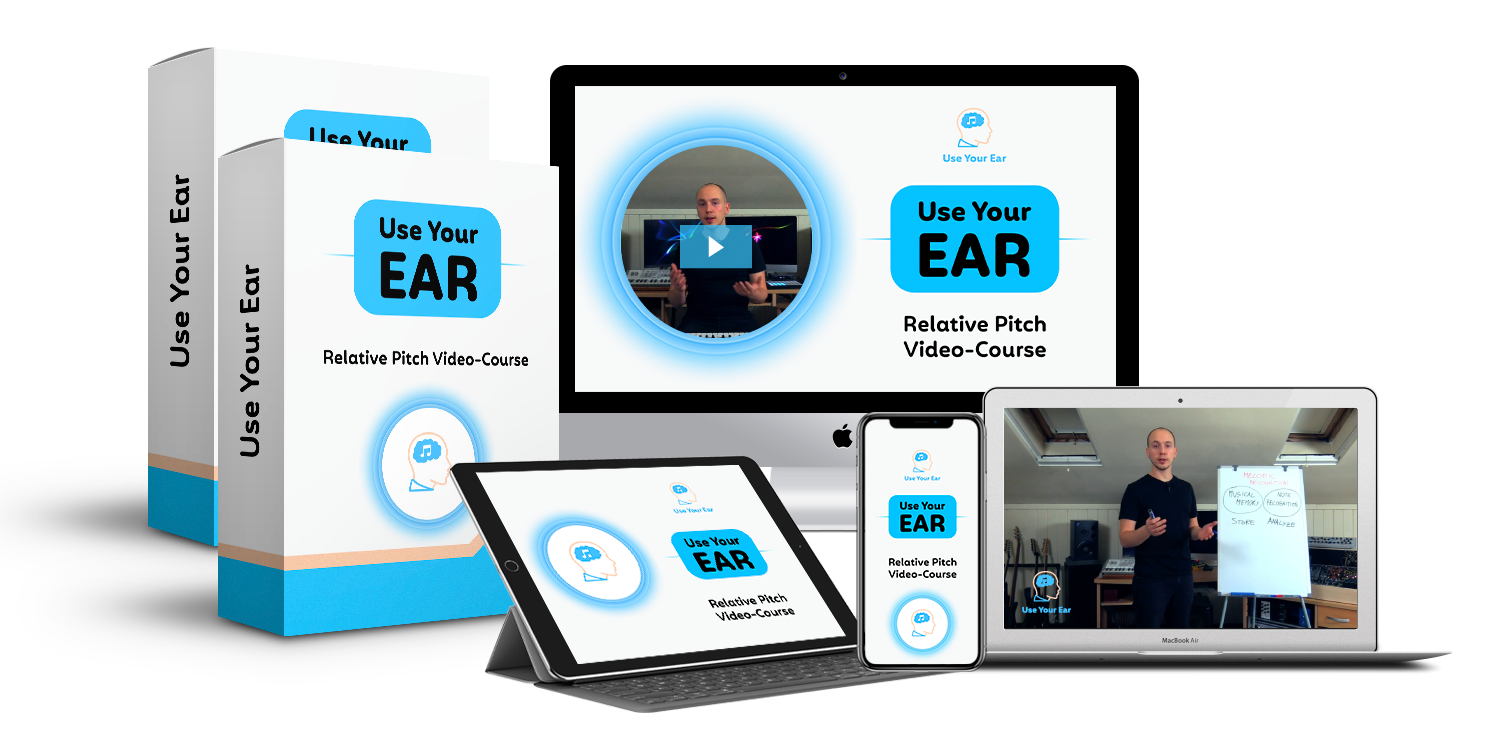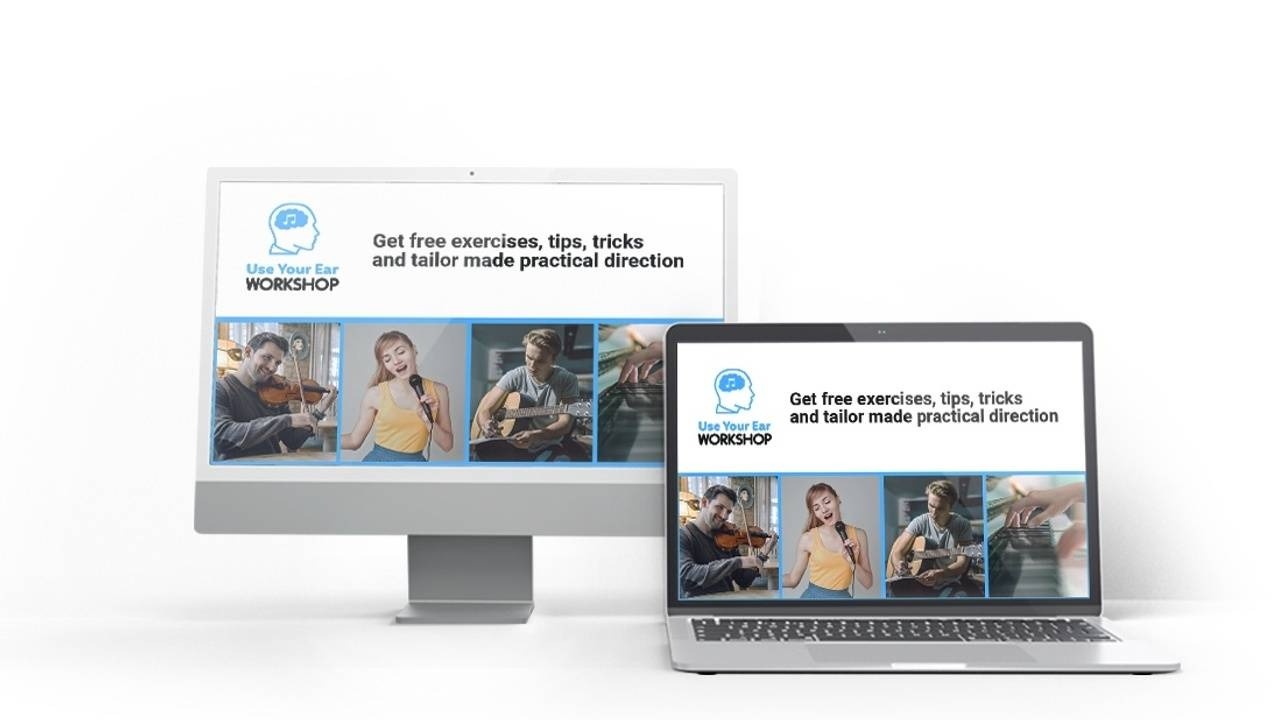Scales Ear Training
Scales are one of the most important (and boring) aspects of music theory, but they don't have to be. Scales are the foundation of all Western music, so it's important to understand them.
Scale ear training is the ability to identify scales and scale degrees by ear. This is a critical skill for all musicians, but it can be especially difficult for those who are just starting out. Traditionally, there are a few different ways to approach scales ear training. One is to learn the major and minor scales and then practice identifying scales by ear. Another is to start with simple intervals and work your way up to more complex scales.
In this post, we will learn the importance of scale ear training, why the traditional methods of scales ear training don't work, and lastly, we will show you a proven science-based approach to scale ear training.

Importance of scale ear training
The ability to identify scales and scale degrees by ear is important for all musicians.
One of the main reasons why scales ear training is so important is because it can help you to become a better musician overall. If you can identify scales and scale degrees by ear, you will be able to play your instrument and write music on the fly. You will also be able to improvise more easily and come up with your own melodies with ease.
Another reason why scales ear training is so important is that it helps you to understand music theory better. If you can identify the scale and the different notes used in a piece of music, it will be much easier to understand how the piece is put together and what the composer is trying to achieve.
Scale ear training is about:
Scale ear training is primarily about recognizing scales or scale degrees which in turn helps us develop our relative pitch.
Recognition of scale types by ear
There are different types of scales, and being able to identify them by ear is a key skill for your overall ear training journey.
Major scale
The most common type of scale is the major scale, which consists of seven notes. The major scale has the following structure: Tone, tone, semitone, tone Tone tone, semitone. This means that between the 1st degree and 2nd degree of the major scale, there is a whole tone interval; The same happens between the 2nd and 3rd degree of the scale. Whereas between the 3rd and 4th degree of the scale, there is a semitone interval, and so on, following the structure mentioned above.
Minor scales
The minor scale is the second most common type of scale. The minor scale has the following structure: Tone, semitone, tone, tone, semitone, tone, tone.
Other scales
There are also other types of scales, like the chromatic scale, which consists of all 12 notes in an octave, the pentatonic scale, which only has five notes, the blues scale, the harmonic minor scale, the melodic minor scale, and more.
Learning to identify these different types of scales gives you a framework for playing your instrument by ear or improvising music seamlessly. For example, if you are writing a song in the major key, you will know the notes within the particular major scale to use. That means, if you know that the song is in the major scale (and you know all the notes of the particular scale), this narrows the notes you could be playing considerably. In other words, you know the 7 notes that will sound “good” in that context; Those are the notes you should play with. At the same time, you should be very careful in playing the remaining 5 notes that don’t belong to that scale. They could very easily sound bad in that context, but there are exceptions to that.
Ear training for minor scales and ear training for major scales can be perfected once you've internalized “key's colors.” The key's colors are the sensation that each note assumes inside the key. We go deeper on how to internalize the key's colors in our courses.


Recognizing which degree of the scale each note is
As we know now, a scale in music is a sequence of musical notes. Each of the notes could be named based on its distance from the tonal center. So the first note is the Tonic or first degree, the second is the second degree, the third note is the third degree, and so on. The solfege nomenclature could also be used to name the notes of the scale, using the sound "Do", "Re", "Mi", "Fa", "So", "La", and "Ti".
Many people fail at scale degree ear training when learning to play by ear because they are using ineffective methods. Numerous rigorous researches have shown that the human perception of musical notes is based on the tonal context.
This is why traditional methods of ear training and scale recognition do not work as in the case of the interval ear training method. When learning to play by ear using the interval ear training method, you only try to recognize the distance between two notes without taking into account the function each of the notes performs within the tonal harmonic context or key of the piece. The correct approach is to internalize the sound of the notes in the tonal context. This is the opposite of what you do with traditional interval-based exercises.
Scales ear training exercises
The main exercise you can practice to develop your scale recognition skills is to learn to sing the different scales (acapella - without the help of any instruments), both in ascending and descending order.
It’s very important, though, that you do not do that by thinking of intervals. This will not work for the reason explained in the previous section of this post.
The Use Your Ear method includes a specific step-by-step series of exercises to learn scales, allowing you to focus on the sensation that each scale degree has inside the context of the scale. This will make your scale ear training exercises easier and more fun and help you learn scales very fast.
Once you can sing the different scales, you can try out some scale recognition exercises. But that’s not always necessary. In the Use Your Ear method, the ability to recognize different scales is trained (indirectly) when practicing other exercises like melodic dictation, chord progression recognition, etc. So you will kill two birds with one stone and make your ear training routine more efficient. Mind that not all the melodic dictation or chord progressions recognition exercises will allow you also to train your scale ear training skills.

Want to become more musical?
we can help you
We offer a range of services to help you develop your musicality and improve your playing.

Relative Pitch Video-Course
The Use Your Ear relative pitch training video course is the perfect way to develop your scale recognition and scale degrees recognition skill, as well as every other skill related to relative pitch (chord progression recognition, melodic recognition, tonic recognition, musical memory, etc.). The Use Your Ear method is based on rigorous scientific studies and has helped thousands of students learn and play music by ear. Our video course is designed for those who want to understand how ear training works and develop their musicianship.
The Use Your Ear video course will:
- Allow you to play by ear.
- Eliminate all the frustration that you’ve likely experienced while following traditional ear training methods.
- Allow you to develop your improvisation and composition skills.
- Make ear training exercises fun and easy.
- Allow you to develop to the ability to play and sing in tune.
The course also contains a section on modal scales ear training which, thanks to our exclusive step-by-step process, is included at a specific point of the course. This will assure you will have developed all the necessary skills needed to grasp this more advanced concept. You will be able to see and hear how these concepts are applied in real-life musical situations.
The Use Your Ear video course is available now.Free Use Your Ear Workshop
Get a taste of our science-based approach to ear training by registering for our free online ear training workshop.
This free workshop will:
- Introduce you to the Use Your Ear science-based ear training method.
- Give you a chance to try our unique and effective exercises.
- Show you why you have been struggling with ineffective exercises as almost every other ear training student.
- Get you 2 free gifts you won't find anywhere else.


Individual online lessons
If you want to get started with a more customized approach, we offer one-on-one ear training lessons online. These are tailored to your specific needs and will help you achieve your musical goals faster and easier than you could even imagine.
One-on-one ear training lessons onlineHow our students learn to recognize melodies and scale degrees by ear
Check out how our students go from zero to recognizing scale degrees by ear and identifying melodies quickly in a few months, following the Use Your Ear method.
Who are our courses for?
The Use Your Ear video course and the free ear training workshops are perfect if you are:

A beginner musician who wants to get started playing by ear.

A singer who wants to develop their musicality and learn to sing in tune.

A musician who wants to develop improvisation/composition skills.

A music student who is having difficulties with auditions or ear training exams.

A pro musician who wants to take his relative pitch to the next level.

A music teacher who wants to help students develop great ear training skills, starting from zero.
If you want to develop your musicality and improve your playing, the Use Your Ear method is for you.



